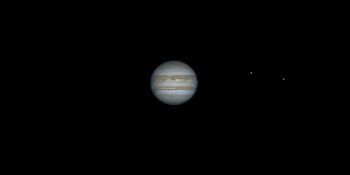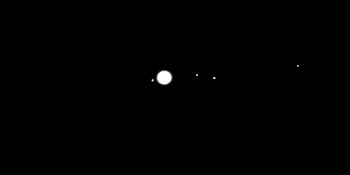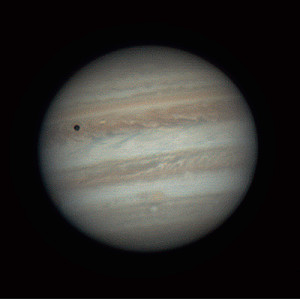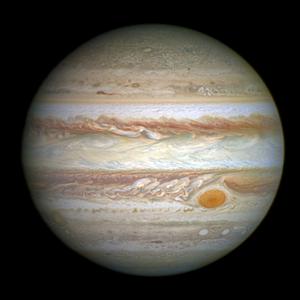Glossary term: 外行星
Description: 在太陽系中,外行星包括木星、土星、天王星和海王星。它們的軌道都在小行星帶之外,並且所有這些行星都是所謂的巨行星,它們的大氣層非常厚,主要由氫氣構成。這使得它們在物理上與內行星截然不同,內行星都是相對較小的岩質天體,大氣層相對稀薄。
對於太陽以外的恆星,其周圍的行星並不一定分為具有類似特徵的內行星群和外行星群--我們知道有許多恆星的近軌道上至少有一顆氣態巨行星,即 "熱木星"。
Related Terms:
See this term in other languages
Term and definition status: The original definition of this term in English have been approved by a research astronomer and a teacher The translation of this term and its definition is still awaiting approval
This is an automated transliteration of the simplified Chinese translation of this term
The OAE Multilingual Glossary is a project of the IAU Office of Astronomy for Education (OAE) in collaboration with the IAU Office of Astronomy Outreach (OAO). The terms and definitions were chosen, written and reviewed by a collective effort from the OAE, the OAE Centers and Nodes, the OAE National Astronomy Education Coordinators (NAECs) and other volunteers. You can find a full list of credits here. All glossary terms and their definitions are released under a Creative Commons CC BY-4.0 license and should be credited to "IAU OAE".
If you notice a factual or translation error in this glossary term or definition then please get in touch.
Related Media
木星的自轉,作者 Vishal Sharma,印度
Credit: Vishal Sharma/IAU OAE
License: CC-BY-4.0 Creative Commons 姓名標示 4.0 國際 (CC BY 4.0) icons
木衛影片2,Nicolas Hurez,Paul-Antoine Matrangolo,和Carl Pennypacker,美國
Credit: Nicolas Hurez,Paul-Antoine Matrangolo 和 Carl Pennypacker/IAU OAE
License: CC-BY-4.0 Creative Commons 姓名標示 4.0 國際 (CC BY 4.0) icons
木星、木衛一及其陰影,作者:Ralf Burkart,德國
Credit: Ralf Burkart/IAU OAE
License: CC-BY-4.0 Creative Commons 姓名標示 4.0 國際 (CC BY 4.0) icons
木星
Credit: 美國國家航空航天局、歐空局和 A. Simon(戈達德太空飛行中心) credit link
License: CC-BY-4.0 Creative Commons 姓名標示 4.0 國際 (CC BY 4.0) icons
土星
Credit: 美國國家航空航天局、歐空局、A. Simon(戈達德太空飛行中心)和 M.H. Wong(加州大學伯克利分校) credit link
License: CC-BY-4.0 Creative Commons 姓名標示 4.0 國際 (CC BY 4.0) icons













